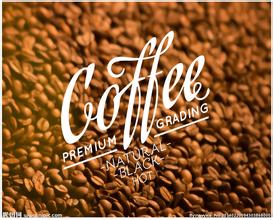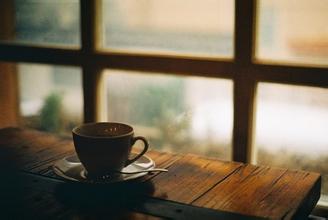Can espresso be ground with a manual bean grinder?-espresso tasting
Can espresso be ground with a manual bean grinder?-espresso tasting
Generally speaking, the finer the grinding, the faster the grinding machine, the stronger the static electricity; the internal material is plastic, and the lower powder mouth does not use the bean grinder designed to reduce static electricity, so the static electricity is stronger; the coffee beans with rich oil and deep roasting are ground, the static electricity is stronger. The Italian bean mill often appears the agglomeration of fine powder during grinding, which affects the density of the powder, resulting in uneven extraction. On the other hand, the magnet at the outlet of the single bean grinder helps to reduce the excessive taste and miscellaneous flavor by electrostatic adsorption of silver skin and fine powder. Any grinding plate of the bean grinder will generate heat in the grinding process, and the heating of coffee powder will accelerate the oxidation process and accelerate the aroma volatilization, resulting in the weakening of coffee flavor after brewing. The calorific value of the cutter head depends on many factors, such as the size of the grinding plate, the material used, the structure of the knife, the fineness of grinding, the speed of the motor, the hardness and texture of coffee beans and so on.
Evenness degree
Coarser coffee particles are more likely to be underextracted, while finer particles are overextracted in advance, so the coffee powder with a larger span of grinding thickness can taste more turbid and irritating smells. When the coffee powder with the same size and similar shape is used for extraction, the taste becomes brighter and stronger, and the performance of flavor characteristics is clearer and consistent.
Fine powder content
Coffee powder close to flour can easily be overextracted or even dissolved in water, thus affecting the extraction taste of coffee. The more fine powder, the more easily coffee is over-extracted, and the more bitter the taste is, the more mixed it is. When making espresso, the fine powder will first be washed out by the water and into the cup. If extracted properly, the thick oil will hold up the fine powder, and the fine powder will float on the surface of the oil, forming a beautiful "tiger spot". But "tiger spot" does not represent the taste of espresso. The production of fine powder can be reduced by choosing a better bean grinder or using a sieve. But if there is no fine powder at all, the brewed coffee will also lack a sense of hierarchy.
Calorific value
The grinding plate of any bean grinder will generate heat in the grinding process, and the heating of coffee powder will accelerate the oxidation process and accelerate the volatilization of aroma, resulting in the weakening of coffee flavor after brewing. The calorific value of the cutter head depends on the size of the grinding plate, the material used, the structure of the knife, the fineness of grinding, the speed of the motor, the hardness and texture of coffee beans and many other factors.

Important Notice :
前街咖啡 FrontStreet Coffee has moved to new addredd:
FrontStreet Coffee Address: 315,Donghua East Road,GuangZhou
Tel:020 38364473
- Prev

Italian coffee machine parts-which brand of Italian coffee machine is good?
Italian coffee machine parts-Italian coffee machine which brand good Italian coffee machine is generally divided into traditional boiler type and cutting-edge heating block type. The traditional boiler type has been passed on because of its stable water temperature and high extraction quality. But the disadvantage is also obvious, the manufacturing cost is high, and the price of the finished coffee machine is high. The corresponding toy is the first of the middle and high-end coffee machines.
- Next

The Origin Culture of Coffee-the Story of the Shepherd
Although coffee was found in the Middle East, coffee trees first originated in Africa, a region now belonging to Ethiopia, called Kaffa, from which coffee spread to Yemen, Arabian Peninsula and Egypt, where coffee developed rapidly and soon became popular in people's daily lives. By the 16th century, early merchants had sold coffee in Europe, thus using coffee as a
Related
- Beginners will see the "Coffee pull flower" guide!
- What is the difference between ice blog purified milk and ordinary milk coffee?
- Why is the Philippines the largest producer of crops in Liberia?
- For coffee extraction, should the fine powder be retained?
- How does extracted espresso fill pressed powder? How much strength does it take to press the powder?
- How to make jasmine cold extract coffee? Is the jasmine + latte good?
- Will this little toy really make the coffee taste better? How does Lily Drip affect coffee extraction?
- Will the action of slapping the filter cup also affect coffee extraction?
- What's the difference between powder-to-water ratio and powder-to-liquid ratio?
- What is the Ethiopian local species? What does it have to do with Heirloom native species?

